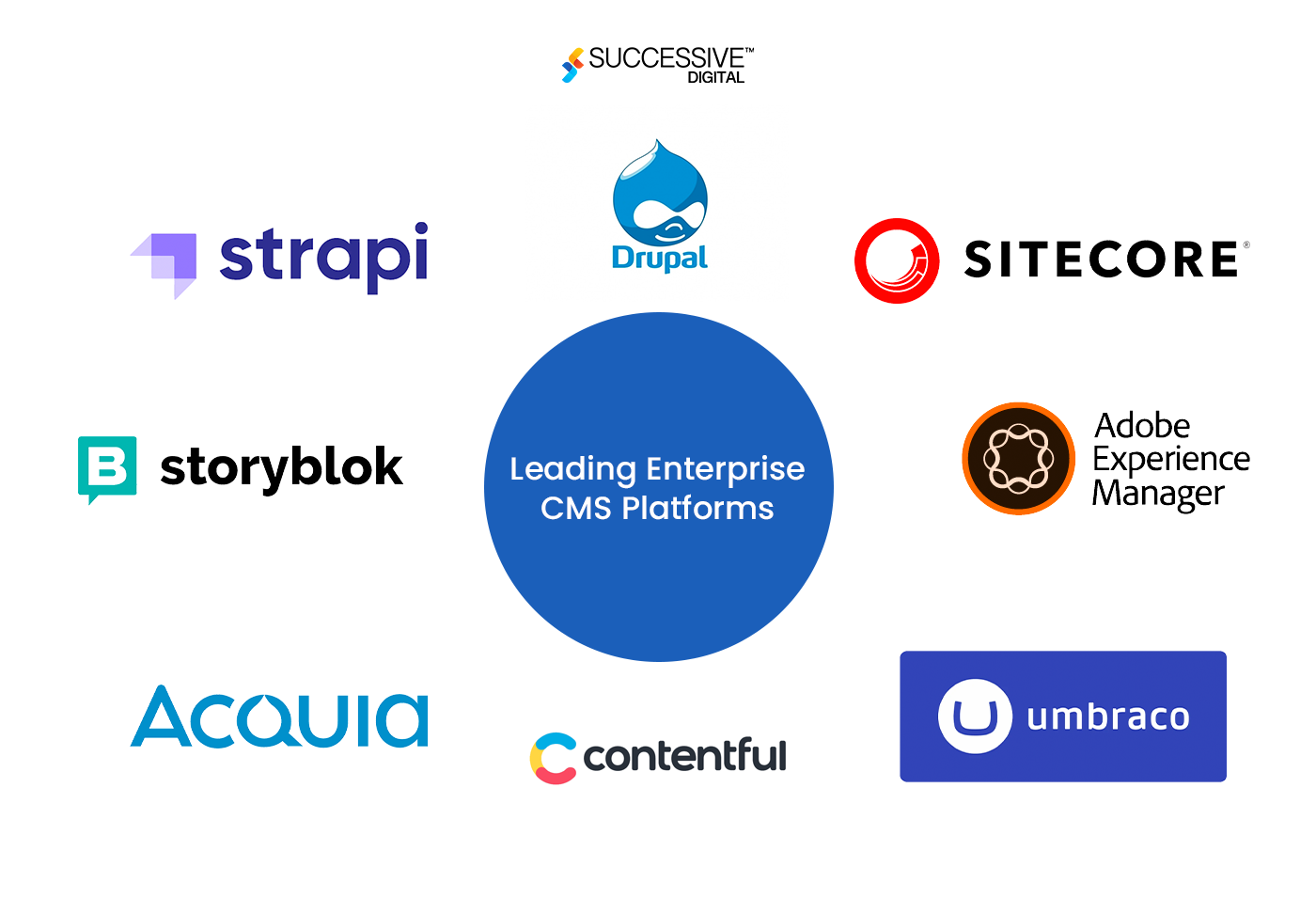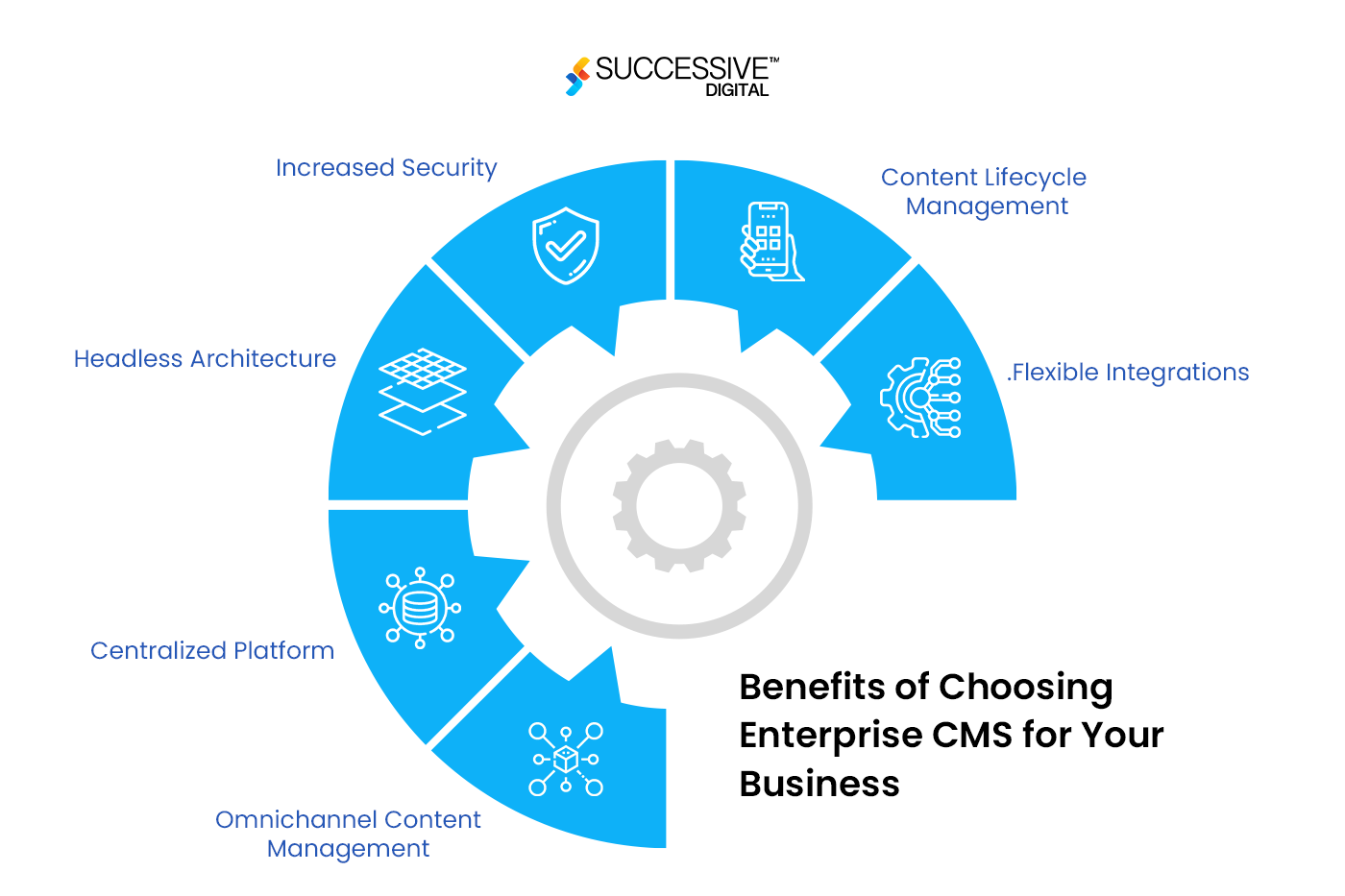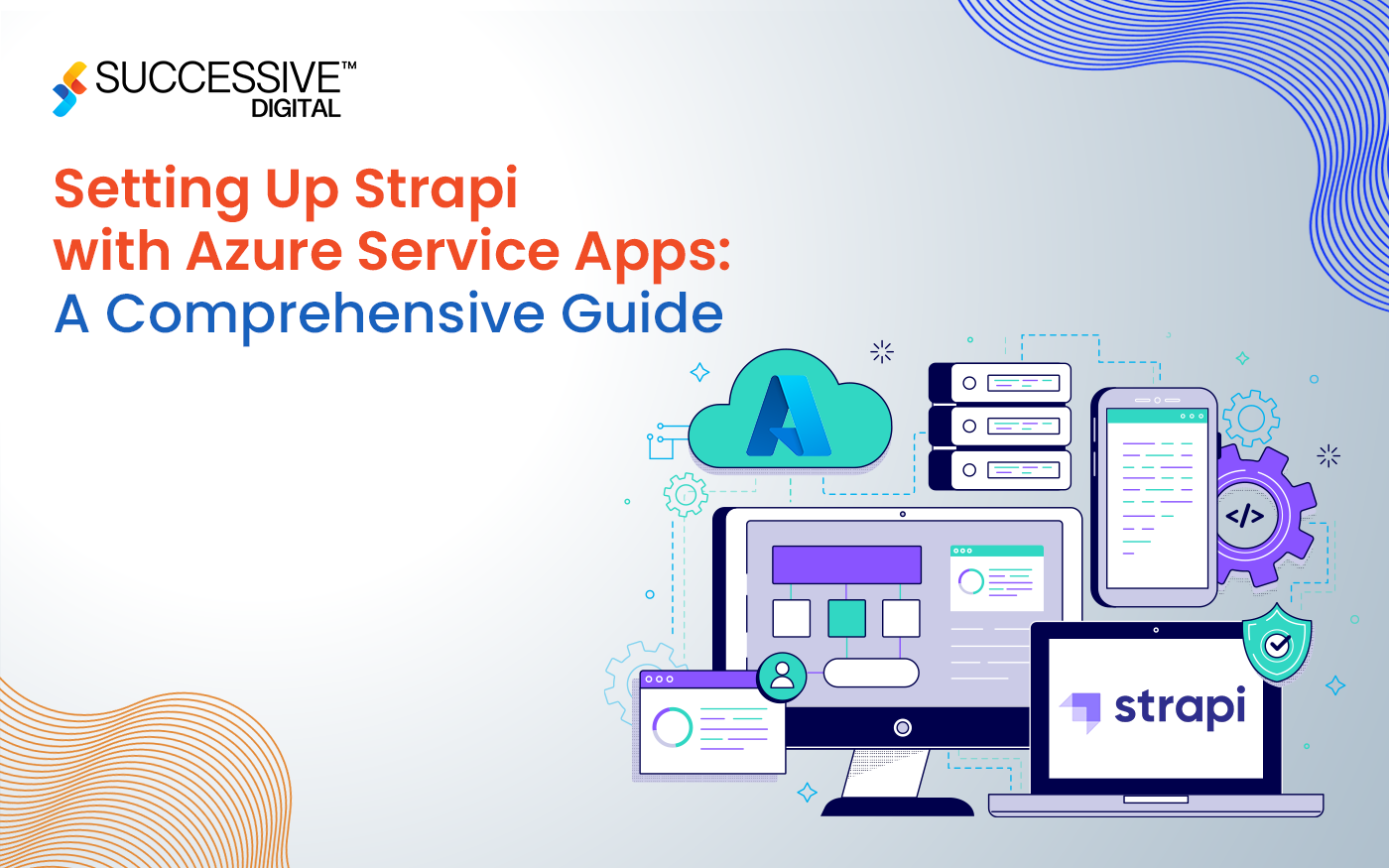As the demand for continuous access to digital content increases, managing content-based operations and delivering a unified digital experience has become crucial. In this case, businesses that still follow the traditional method of managing content face challenges that limit their growth and capability to facilitate omnichannel content delivery. Investing in a robust Enterprise CMS can help address these roadblocks. It will help businesses manage and optimize content and enable omnichannel content distribution just as they want.
A study conducted by MarketsandMarkets shows that the global enterprise content management market will reach $38 billion by 2026. This indicates that businesses that leverage enterprise CMS can expect a significant elevation in their content strategy.
To explain the significance of Enterprise content management solutions in detail, this blog will discuss the key challenges businesses face in content management and the transformative benefits that can streamline their operations.
Enterprise CMS: An Overview of Modern Content Management
Enterprise CMS refers to a content optimization software solution that provides a centralized dashboard for creating, editing, storing, and managing content on the enterprise level. These platforms allow content to be managed centrally through a backend repository while offering flexibility for integration with various front-end frameworks.
Enterprise CMS utilizes a MACH (microservices, APIs, cloud, and headless) architecture that allows for creating and delivering content in a modern and optimized manner. Microservices, APIs, and cloud technology contribute to the overall efficiency and scalability of the enterprise environment’s content management and optimization process.
The primary goal of an Enterprise CMS is to streamline and optimize content-related processes for large enterprises, promoting collaboration, efficiency, and compliance with regulatory standards. These systems offer various features, such as user-based access controls, versioning capabilities, and workflow management tools to ensure secure and organized content handling. This system also flexibly integrates with other third-party software and APIs, enabling seamless data exchange, extended functionality, and interoperability. Various enterprise CMS platforms offer enterprise-level content management capability. You can refer to the infographic below to get an insight of top enterprise CMS platforms.

What are the Key Challenges Faced by Businesses in Content Management?
Gaps in content management and distribution create obstruction in operations and make content management difficult for businesses looking to enhance the customer experience. From fragmented content workflows to decentralized content repositories, content management becomes complex and unmanageable for enterprises with massive amounts of data. Let’s discuss these challenges in detail.
-
Decentralized Content Management Systems
Decentralized content management systems often pose a significant challenge for businesses. With multiple teams utilizing disjointed systems or platforms to manage content, it becomes challenging to maintain consistency in content-based operations. This decentralization leads to content management gaps and siloes in data accessibility and sharing, which makes it challenging to deliver content across multiple channels.
-
Human Interventions
Relying entirely on manual processes for complex tasks such as content creation, approval, and publishing increases the risk of human errors, and repetitive work slows down the content lifecycle. Moreover, human interventions and zero automation make it difficult to efficiently handle large volumes of content, leading to bottlenecks and inefficiencies in content management workflows.
-
Fragmented Content Workflows
In a large-scale organization, content transitions happen through various stages, such as creation, review, approval, and distribution. In this process, the content is passed through various touchpoints and stakeholders. If the content workflows of these organizations are fragmented, managing them becomes increasingly complex, especially when different teams or departments have unique processes and tools. Fragmented workflows can result in inefficiencies, delays, and inconsistencies in content delivery, impacting the overall customer experience.
-
Limited Integration Capabilities
Limited integration capabilities and restrictions of existing software that a business already utilizes, such as CRM or marketing automation tools, often restrict a business’s ability to leverage content effectively across channels and touchpoints. This makes it challenging for businesses to achieve a unified content strategy and deliver personalized customer experiences.
-
Monolithic Architecture
Monolithic architecture refers to a traditional approach where all components of a content management system are tightly coupled and packaged together as a single unit. Monolithic systems are complex and offer minimal flexibility and scalability to adapt to evolving business needs and technological advancements. Optimization, storage, and omnichannel delivery of content in a monolithic architecture can be difficult and time-consuming since there is less control over content. This poses a major challenge in seamless content management.
-
Lack of Data Security
Organizations that don’t leverage a robust enterprise CMS platform might face a challenge to safeguard their sensitive data from unauthorized access. A lack of proper authentication, encryption, access controls, and monitoring mechanisms can expose valuable content assets to security issues, such as compromised data confidentiality, integrity, and safety.
What are the Benefits of Choosing Enterprise CMS for Your Business?

By now, we understand that there are various challenges in content management, and a strategic solution to this is utilizing a robust Enterprise CMS for your business. It offers multiple benefits, which include:
-
Omnichannel Content Management
Enterprise content Management systems enable omnichannel content management, allowing businesses to deliver content across various channels seamlessly. Whether a website, mobile application, social media platform, or any other digital touchpoint, an enterprise CMS ensures consistent and optimized content distribution everywhere. This capability enhances the customer experience and facilitates a unified brand presence across all channels.
-
Centralized Platform
When you utilize an Enterprise headless CMS, you get a centralized backend repository for managing digital content and assets. This centralized approach streamlines content creation, editing, and distribution processes, reducing redundancies and minimizing the risk of inconsistencies. With a single point of control, organizations can enhance efficiency, enable better team collaboration, and maintain a consistent brand identity.
-
Headless Architecture
Modern enterprise content management systems are built on headless architecture to streamline content creation and delivery. This architecture decouples the backend content repository from the frontend presentation layer. This decoupling allows greater flexibility in designing and delivering content across various devices and platforms. It also allows businesses to seamlessly adapt their system to evolving technologies, ensuring a responsive and dynamic user experience without being constrained by a monolithic CMS structure.
-
Increased Security
Security is critical in the digital landscape, and an Enterprise CMS is designed to address these concerns comprehensively. With robust access-based controls, end-to-end encryption, and authentication mechanisms, businesses can safeguard sensitive information and determine who gets access to the data and who doesn’t. Regular updates and monitoring further enhance security measures, protecting against potential threats and ensuring compliance with industry regulations.
-
Content Lifecycle Management
Enterprise CMS facilitates effective content lifecycle management by streamlining the content creation, publishing, archiving, and removal process. This capability ensures that content remains relevant and up-to-date across all channels, keeping accurate information from being presented to the end users. By leveraging enterprise content management software, businesses can implement content governance strategies, automate workflows, and maintain control over the entire content lifecycle.
-
Flexible Integrations
One of the major benefits of an Enterprise CMS is that it offers flexibility to integrate with other business applications, third-party software, and APIs. As a central hub for data accessibility and utilization, this seamless integration enhances overall business processes, enables data-driven decision-making, and ensures a connected digital ecosystem.
Conclusion
We are living in an era where content plays a crucial role in making or breaking a deal. Hence, enterprises looking to enhance digital experiences need a customized content management system to manage their content-based operations and roadmap how this content is delivered across every touchpoint. So, are you ready to transform your content strategy with a robust and scalable enterprise content management system? Get in touch with our experts at Successive Digital and let us build a custom solution for your business.












